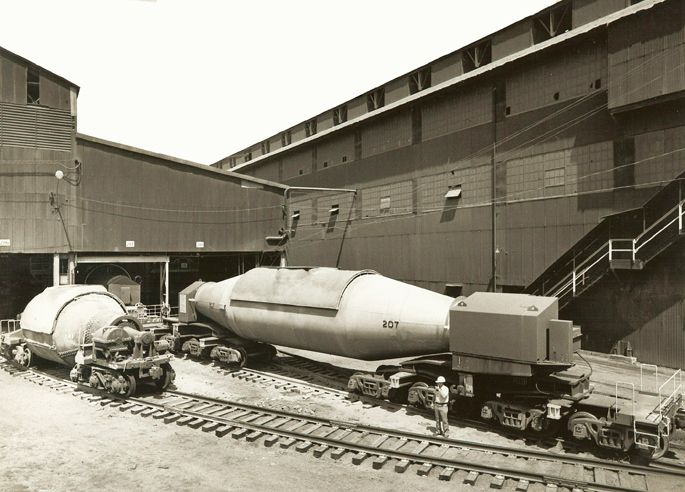
I suggest simple materials handling solutions that move the spent fuel, that not in the immediate process of being unloaded, off too a more secure part of the facility.
For a hundred or so years we have been moving material in devices like this. We surely can build a transport for very hot rad waste.
The inventory of fission products in lightly-decayed fuel makes handling outside of the vessel, transfer canal, and SFP problematic.
Some plants in this country, owing to a lack of centralized storage (Yucca Mountain) have gone to dry-cask storage, but that is only for heavily-decayed fuel assemblies, on the order of years of decay time to reduce the heat load.
The SFP in Fukushima 4 had a full core that was unloaded in early December 2010. If it had any kind of power history on it, it's unlikely that could go anywhere else other than a SFP. I read somewhere that there were other used fuel assemblies in the pool was well, but I have no details on their power and decay history. If some of those were decayed enough, they could have been candidates for removal to the common SPF that is a feature of the Fukushima Daiichi site. If nothing else, I am guessing we'll see some kind of rule making from the Japanese regulatory authority concerning moving significantly-decayed assemblies from the unit SPF to the common SPF.
That won't let them off the hook regarding beefed up reliability of onsite AC power. No matter where the fuel is, you still have to have some measure of heat removal capability until dry storage is possible.
 I suggest simple materials handling solutions that move the spent fuel, that not in the immediate process of being unloaded, off too a more secure part of the facility.
I suggest simple materials handling solutions that move the spent fuel, that not in the immediate process of being unloaded, off too a more secure part of the facility.